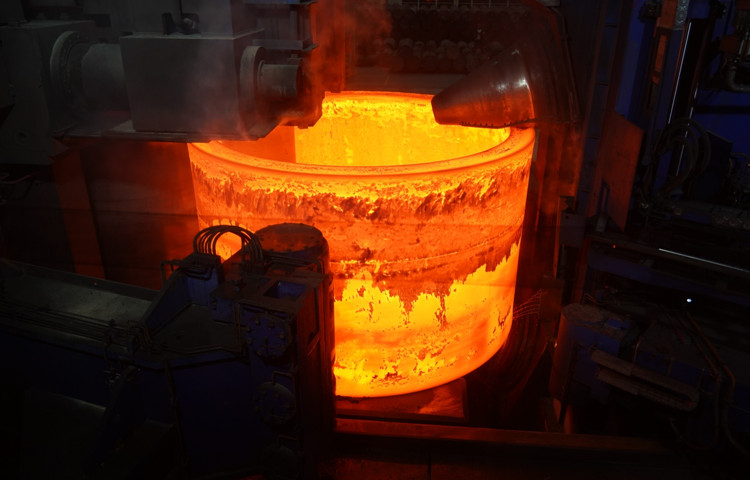- tyler@kirail.com
- +86 15603721115
The oxidation of forgings is mainly affected by the chemical composition of the heated metal and the internal and external factors of the heating ring (such as furnace gas composition, heating temperature, etc.).
1. Chemical composition of metal materials
The amount of oxide scale generated is closely related to the chemical composition. The higher the carbon content of steel, the less oxide scale is generated, especially when the carbon content exceeds 0.3%. This is because after carbon is oxidized, a layer of carbon monoxide (CO) gas is generated on the surface of the blank, which plays a role in inhibiting further oxidation. The more Cr, Ni, Al, Mo, Si and other elements in the alloy steel, the less oxide scale is generated during heating. This is because after these elements are oxidized, they can form a dense oxide film on the surface of the steel, and it has a close thermal expansion coefficient to steel, and it is firmly attached to the surface, not easy to crack and fall off, so it can prevent further oxidation and play a protective role. Heat-resistant non-flaking steel is an alloy steel with a high content of the above elements. When the Ni and Cr content in the steel is 13%-20%, oxidation hardly occurs.

2. Furnace gas composition
Furnace gas composition The composition of furnace gas has a great influence on the formation of oxide scale of forgings. The formation of oxide scale of the same steel forging in different heating atmospheres is also different. In oxidizing furnace gas, the most oxide scale is formed, which is light gray and easy to remove; in neutral furnace gas (mainly containing N2) and reducing furnace gas (containing CO, H2, etc.), the oxide scale formed is less, black, and difficult to remove. In order to minimize the formation and removal of oxide scale, attention should be paid to the control of furnace gas composition at each stage of heating. Generally speaking, when the forging is below 1000℃, oxidizing furnace gas is used for heating. Since the temperature is not high at this time, the oxidation process is not very intense, and the formed oxide scale is easy to remove; when the temperature exceeds 1000℃, especially in the high temperature insulation stage, reducing furnace gas or neutral furnace gas should be used to reduce the formation of oxide scale. The nature of the furnace gas in the flame heating furnace depends on the amount of air supplied when the fuel is burned. If the excess air coefficient in the furnace is too large, the air supply is too much, the furnace gas will oxidize, and there will be more metal oxide scale. If the excess air coefficient in the furnace is between 0.4 and 0.5, the furnace gas will be reducing, forming a protective atmosphere to avoid the formation of oxide scale and achieve non-oxidative heating.
3. Heating temperature
The heating temperature is also the main factor in the formation of oxide scale on forgings. The higher the heating temperature, the more intense the oxidation. Before 570℃~600℃, the forgings oxidize slowly. From 700℃, the oxidation speed accelerates. At 900℃~950℃, the oxidation is very significant. If it is assumed that the oxidation rate is 1 at 900℃, 2 at 1000℃, 3.5 at 1100℃, and 7 at 1300℃, it has increased by 6 times.
4. Heating time
The longer the forging is heated in the oxidizing gas in the furnace, the greater the oxidation diffusion and the more oxide scale is formed, especially in the high-temperature heating stage. Therefore, the heating time should be shortened as much as possible, especially the heating time and insulation time at high temperature should be shortened as much as possible.
In addition, high-temperature forging blanks not only oxidize in the furnace, but also during the forging process, although the oxide scale on the blank has been cleaned, if the blank temperature is still high, oxidation will occur again. However, as the blank temperature decreases, the oxidation rate gradually decreases.